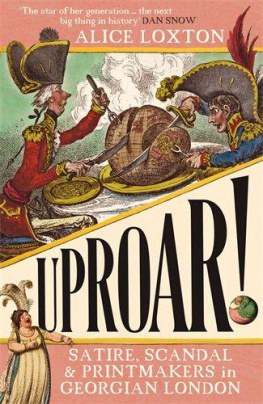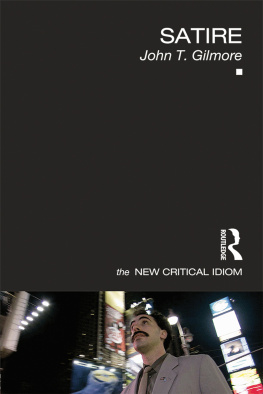I offer my heartfelt gratitude to all who, with their expertise, counsel, suggestions, critical eye and ear, and intellectual community, have made this scholarly endeavor a little less solitary and have thereby improved it (and me). I delight in naming a few of these special people. My deepest gratitude goes to my friend and teacher, Oliver Simons, for his untiring mentorship, his unflagging, fathomless patience, and his inspirational intellectual companionship. Thank you, Oliver. I am ever indebted to those who read drafts of this project at various stages, including Paul Fleming, Rdiger Campe, my anonymous peer reviewers, Oliver Simons, Judith Ryan, Eric Rentschler, and Alexander Kluger. They supplied just the right mix of validating praise and constructive criticism, and this book is the better for them and would not have come about without them. I am also very grateful to (and for) my colleagues in German Studies at Boston College Agnes Farkas, Rachel Freudenburg, Geraldine Grimm, Ursula Mangoubi, Hanni Myers, Michael Resler, and Ruth Sondermann. Their enthusiastic support of my work and kind encouragement are an invaluable motivation. To Caz Novak, for his assistance in preparing the manuscript for publication, and to Kenneth Brummel, for his unparalleled critical acumen and sage advice, I offer sincerest thanks. And one final debt of gratitude I will always be unable to repay is the one I owe my family. As a most modest token of my thanks, I dedicate this book to them.
A remark on translations: unless otherwise noted, all English translations from the German are my own.
Conclusion | Satire after Satire
The chief guiding question of this study, to begin again, is a simple one: what is satire? Tenaciously resistant to fixed definition, the term has frequently provoked an intuitive response in the reader, who may identify its primary characteristics on the level of tone, topic, or socio-political function rather than on the level of form or signifier without an origin. And yet it has a history.
The reconstruction of its recent history in these pages adopts a semiotic approach because diachronicity of this narrative back into focus.
Certain ancillary questions have occupied the concerns of the foregoing chapters. What, for example, are the qualities of satire that constitute it as an aesthetic object? And to what extent are these specific qualities limited to literary writing? What are the ends of satire? As the starting point, Jean Paul was uniquely situated at a historical moment after which satire virtually vanished both from literature and from mythification, and procedures of citation whose history we might trace in postwar writings both fictional and nonfictional, literary and theoretical.
In distinguishing between these two modes of writing, one must tread a fine line. The opposition of literature to theory is, largely, an outmoded antinomy between narrative and non-narrative writing, between fictional and nonfictional prose. Because this distinction does not strictly hold under scrutiny fictional prose of the postwar era incorporates non-narrative elements, and non-fictional writing often resorts to narrative strategies to provide structure for theoretical arguments these two terms must be differentiated on the basis of their respective focus on narration and metanarration. At the same time one must not lose sight of the historical constructedness of the term literature and, by extension, its ostensibly scientific opposite, theory. As even a cursory reading will show, Roland Barthes first large-scale work, Writing Degree Zero, makes the case that then-current (i. e. prestructuralist) conventions and conceptions of literature arose from a historical paradigm of realism in the nineteenth century. Barthes diagnosis of a turn toward the zero degree in the nouveaux romans of writers such as Alain Robbe-Grillet which is to say, a shift toward the Cartesian origin in the axial system of style and language, toward a purely semiotic mode of writing [criture] is thus predicated upon a notion of literature as a resultant construct of social and political history. Fuller elaborations of this work and Barthes theories take place in other studies, but suffice it to say, the historicization of the term literature complicates any nave opposition between the terms literature and theory. Indeed, such a complication aside, I have endeavored to demonstrate concretely how these categories become unstable when seen through the prism of the history of satiric practices and, further, how satiric practices in fact bring about this categorical instability. Sharing a common semiotic basis suggests a deeper relation by which literature may wax theoretical and theory become literary.
It is for this reason that both literary and theoretical texts are under discussion here: to recount a history of satiric practices of inversion, mythification, and citation that affects postwar prose in general. For in this age of the new Rather than advocate reading unidirectionally, from theory to literature, these pairings of theoretical writing with literary writing suggest a productive resonance between the two: that understanding literature through its shared history with theory in satiric semiotic practices might inflect the way we read theory.
The first nodal point continues a trend, in older satires, of narrating a clash between various modalities of perception, of suspending a hierarchical order of things. It speaks to the still ineradicable connection between satire and politics. A first theoretician of the carnivalesque who, through his reception in France (via Julia Kristeva), helped bring about high dialogism, as Kristeva points out, that is rooted in early Menippean satire, highly novelistic, and thus particularly literary.
The same could be said for Thomas Bernhard, whose two later novels, Woodcutters and Extinction , round off the discussion of the carnivalesque as a satiric practice here. As a perpetual gadfly for the Austrian literary, cultural, and political establishment, Bernhard published works whose polemical features and topical commentary frequently inspired the Austrian critical establishment to dismiss them as philippics besmirching the good name and reputation of the homeland. One cannot overlook Bernhards undeniable role as a public intellectual and self-conscious Nestbeschmutzer [nest soiler], but in the satiric dimension of Bernhards writing, he too combines an older political modality of satire with semiotic practices that are rooted in this narrative of satires history since 1800. In the epistemological, syntactic, and lexical inversions; the whereas earlier conceptions of satire as political writing or as a fixed genre cannot keep pace with its Protean shapes.
Both Woodcutters and Extinction employ many of the same figures of inversion in their renderings of satire while evincing a shift towards a different set of practices. With Bernhards archetypal hyperbole and repetition, Woodcutters dramatizes an inversion in first-person narrative perspective using syntactical and lexical inversions. In so doing, it relativizes the apodictic assertions of the narrator while juxtaposing two epistemologies: that of the carnivalesque, possibly mad observing narrator and that of the objects of his observations (the dinner party attendees). In a throwback to older conceptions of satire as political writing, the novel incited a publishing scandal through the links between its characters and real-life public figures who felt themselves libeled. Woodcutters thus came to represent the lingering political associations of satiric writing by embodying readers assumptions of overlap between fiction and nonfiction, between represented reality and the real. The resolution of the lawsuits against Bernhard, however, landed in his favor and therefore implicitly in satires favor. The verdict of the lawsuit against him might be thought of as a juridical ruling that affirms the viability of satires literary and aesthetic character.











